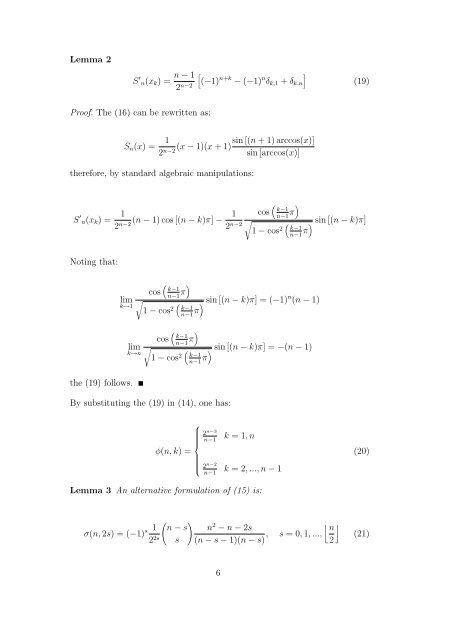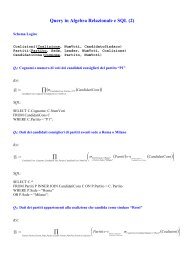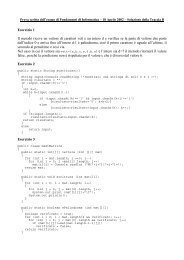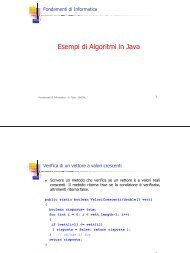Vandermonde systems on Gauss-Lobatto Chebyshev nodes
Vandermonde systems on Gauss-Lobatto Chebyshev nodes
Vandermonde systems on Gauss-Lobatto Chebyshev nodes
Create successful ePaper yourself
Turn your PDF publications into a flip-book with our unique Google optimized e-Paper software.
Lemma 2S ′ n(x k ) = n − 12 n−2 [(−1) n+k − (−1) n δ k,1 + δ k,n](19)Proof. The (16) can be rewritten as:S n (x) = 1[(n + 1) arccos(x)]2n−2(x − 1)(x + 1)sinsin [arccos(x)]therefore, by standard algebraic manipulati<strong>on</strong>s:S ′ n(x k ) = 11 cos ( k−1n−12n−2(n − 1) cos [(n − k)π] − π)2 n−2 √ ( sin [(n − k)π]1 − cos 2 k−1n−1 π)Noting that:limk→1cos ( k−1n−1 π)√1 − cos 2 ( k−1n−1 π) sin [(n − k)π] = (−1) n (n − 1)limk→ncos ( k−1n−1 π)√1 − cos 2 ( k−1n−1 π) sin [(n − k)π] = −(n − 1)the (19) follows.By substituting the (19) in (14), <strong>on</strong>e has:⎧⎪⎨φ(n,k) =⎪⎩2 n−3n−1k = 1,n2 n−2n−1k = 2,...,n − 1(20)Lemma 3 An alternative formulati<strong>on</strong> of (15) is:σ(n, 2s) = (−1) s 1 ( ) n − s n 2 ⌊ ⌋− n − 2sn2 2s s (n − s − 1)(n − s) , s = 0, 1,..., 2(21)6
















